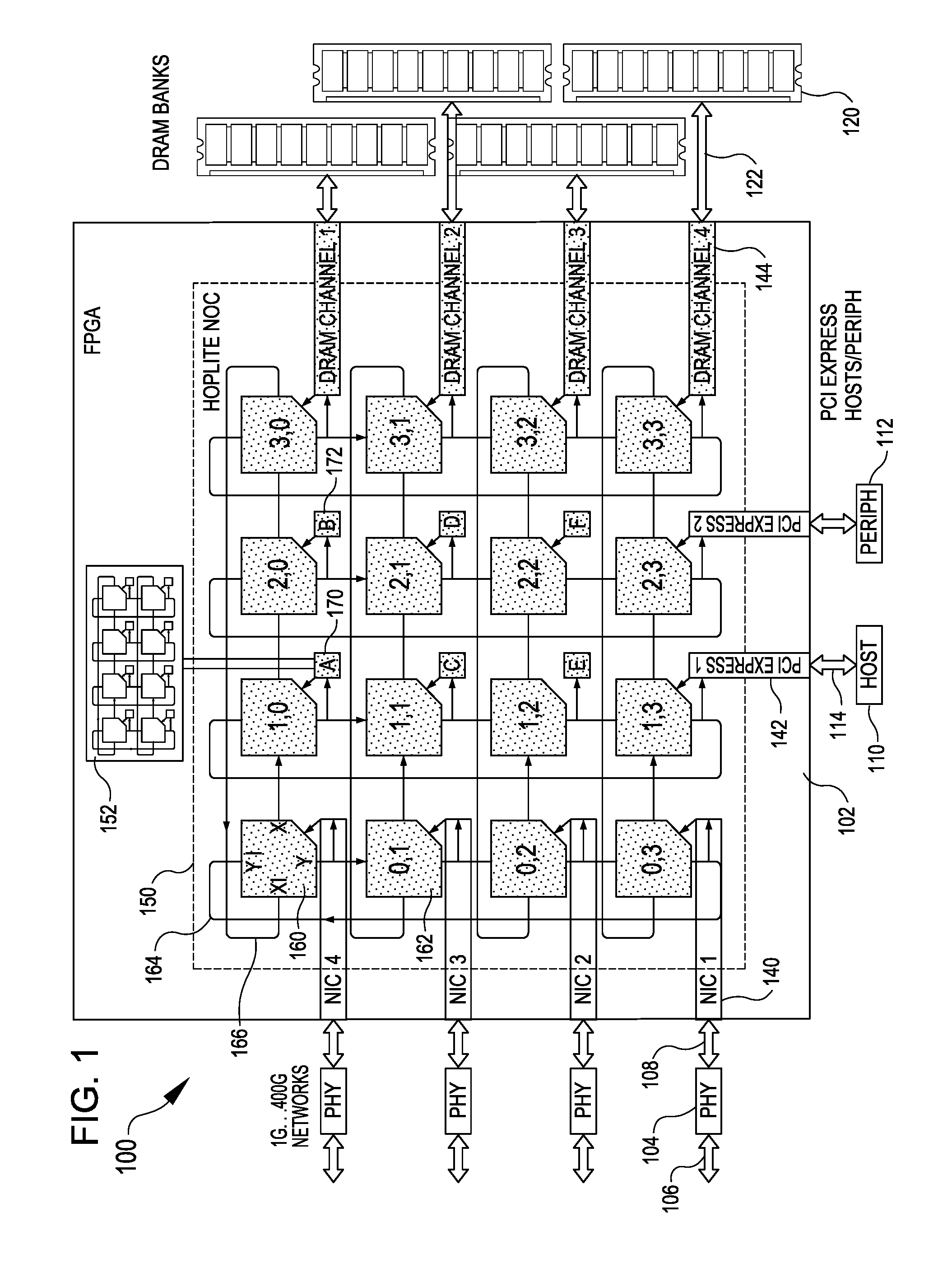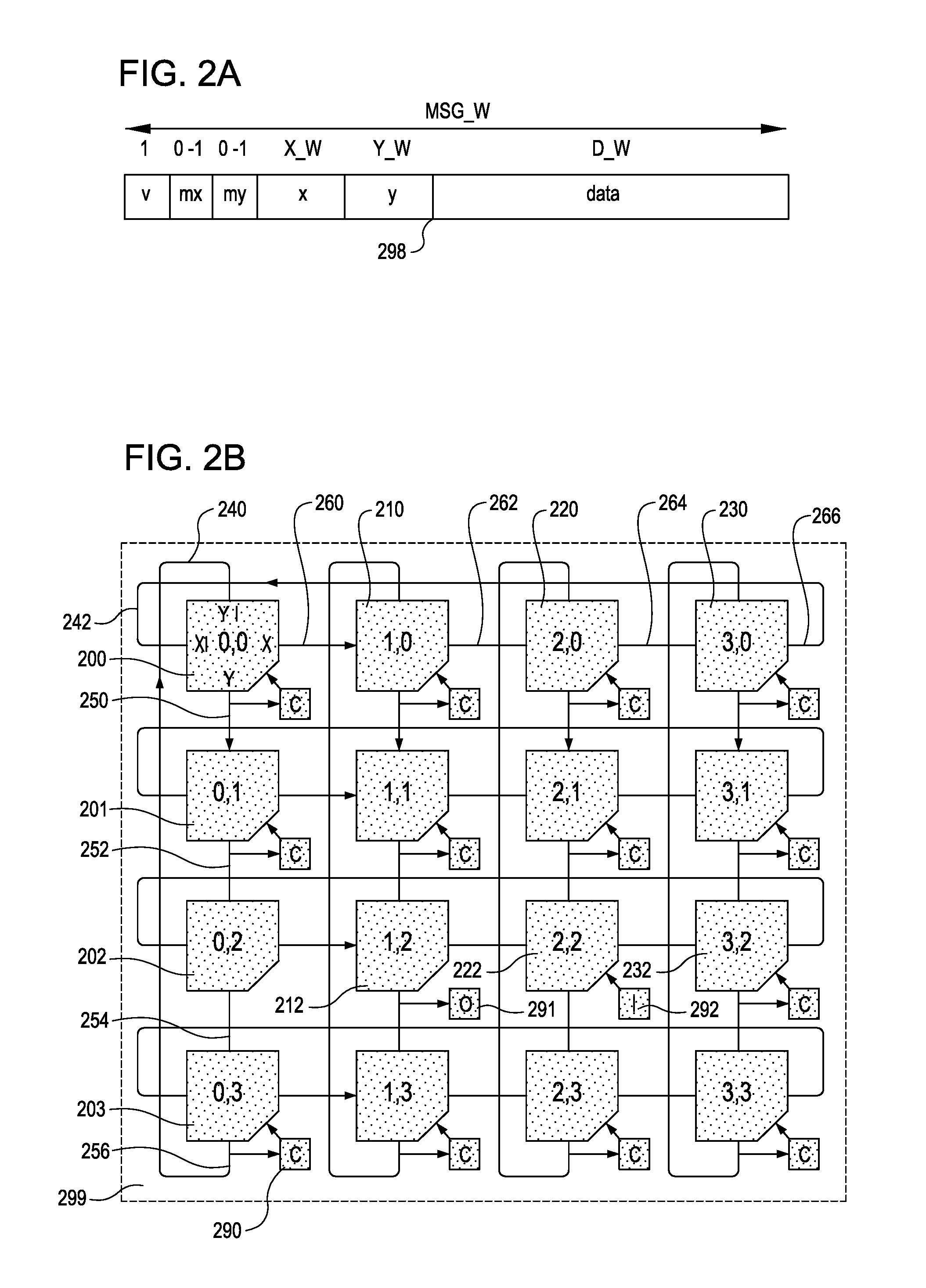Directional two-dimensional router and interconnection network for field programmable gate arrays, and other circuits and applications of the router and network
a router and two-dimensional technology, applied in the field of electronic circuits, can solve the problems of unfavorable fpga soc unfavorable fpga soc, and unfavorable fpga soc, etc., to achieve low switch latency and lower no-load latency.
- Summary
- Abstract
- Description
- Claims
- Application Information
AI Technical Summary
Benefits of technology
Problems solved by technology
Method used
Image
Examples
Embodiment Construction
[0075]A Hoplite NOC facilitates efficient interconnection and transport of diverse data messages among diverse client cores in an SOC.
[0076]Referring to FIG. 1, a system 100 comprises diverse interfaces and functions, which are communicatively coupled physically by the I / O pins of an FPGA SOC 102 and PCB traces 108, 114, 122, and which are communicatively coupled functionally by a NOC 150, according to an embodiment. The system 100 comprises network interfaces 106, which are coupled to network PHYs (physical layers) 104, which are coupled by PCB traces 108 to network interface cores 140, which are implemented in the FPGA SOC 102. System 100 further comprises PCI-express interfaces 114 coupled to PCI-express interface cores 142 implemented in FPGA SOC 102. System 100 further comprises a host computing system 110 coupled to FPGA SOC 102 by means of a PCI-express interface 114. System 100 further comprises PCI express peripheral 112 coupled to FPGA SOC 102. System 100 further comprises...
PUM
 Login to View More
Login to View More Abstract
Description
Claims
Application Information
 Login to View More
Login to View More - R&D
- Intellectual Property
- Life Sciences
- Materials
- Tech Scout
- Unparalleled Data Quality
- Higher Quality Content
- 60% Fewer Hallucinations
Browse by: Latest US Patents, China's latest patents, Technical Efficacy Thesaurus, Application Domain, Technology Topic, Popular Technical Reports.
© 2025 PatSnap. All rights reserved.Legal|Privacy policy|Modern Slavery Act Transparency Statement|Sitemap|About US| Contact US: help@patsnap.com



